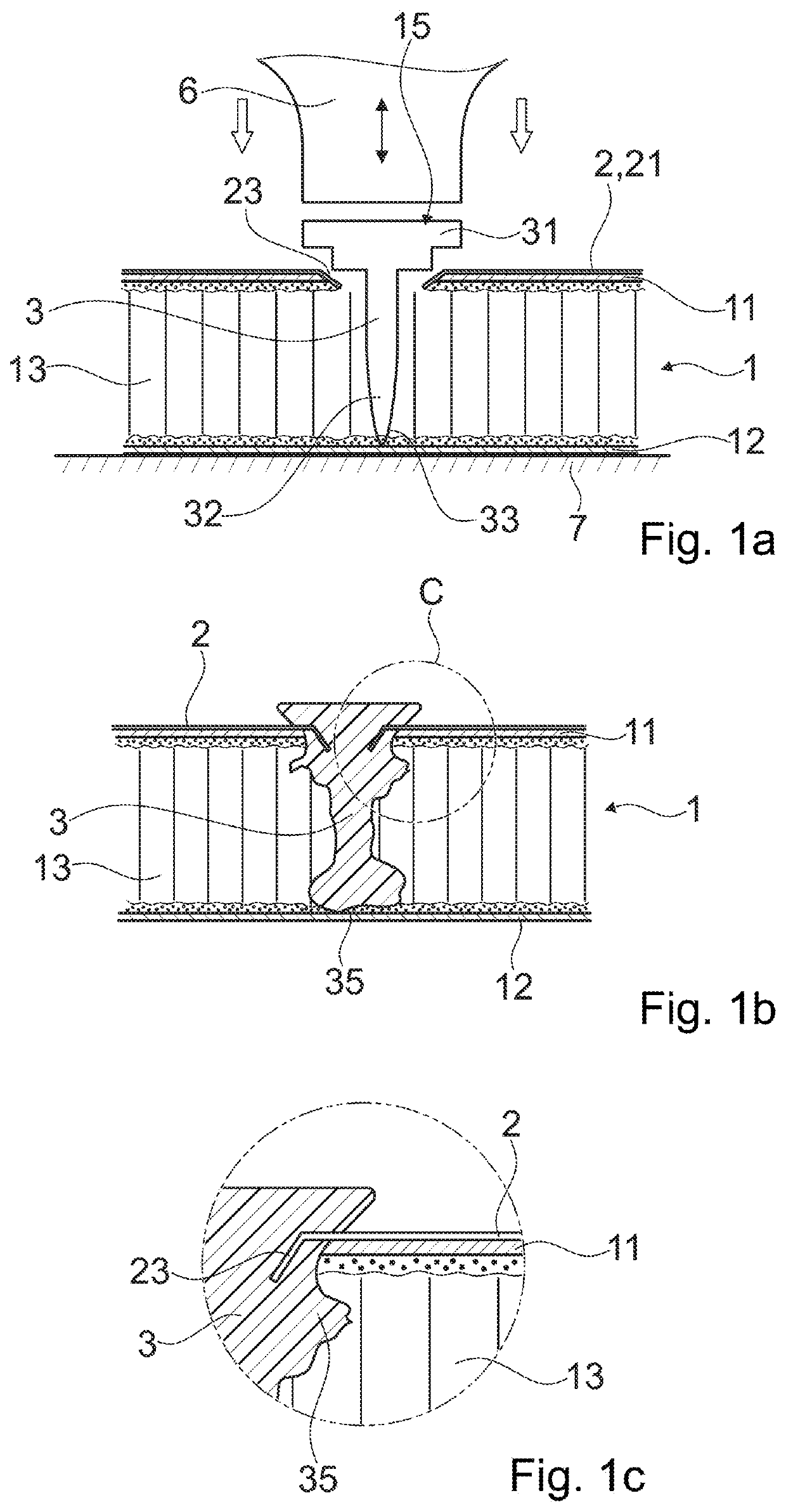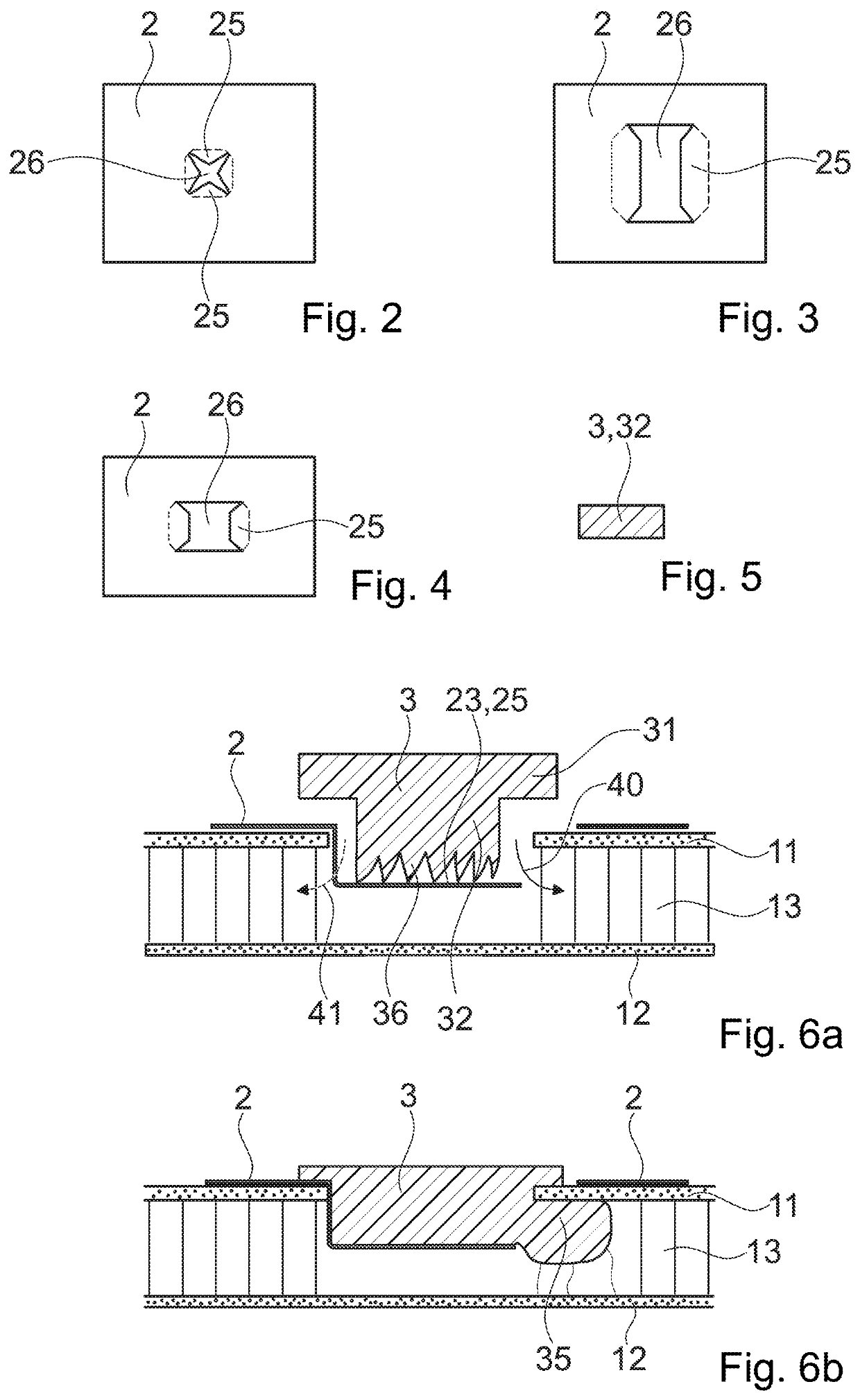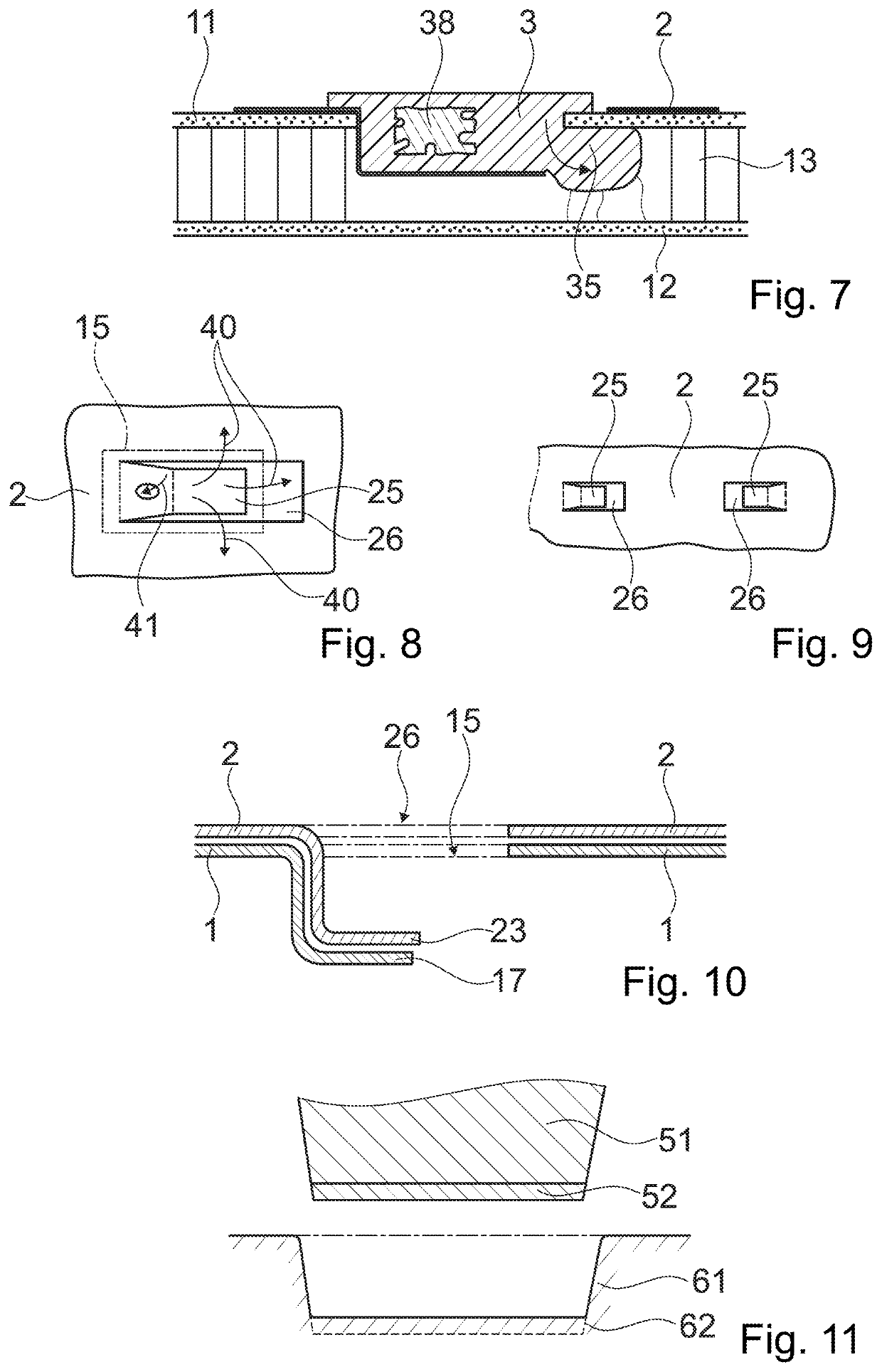Securing a second object to a first object
a technology for securing a second object and a first object, applied in the field of mechanical engineering and construction, can solve the problems of increasing manufacturing costs, no long-term control of reliability, new challenges in the bonding element of these materials, etc., and achieve the effect of efficient and quick
- Summary
- Abstract
- Description
- Claims
- Application Information
AI Technical Summary
Benefits of technology
Problems solved by technology
Method used
Image
Examples
Embodiment Construction
[0100]The configuration of FIG. 1a includes a first object 1 being a sandwich board with a first building layer 11, a second building layer 12, and an interlining 13 between the building layers. The first and second building layers may include a fiber composite, such as a continuous glass or continuous carbon fiber reinforced resin. The interlining may be any suitable lightweight material, for example a honeycomb structure of cardboard. An additional adhesive may bond the building layers 11, 12 to the interlining. In an example a slightly foaming adhesive on polyurethane basis is used. Possible pores in the adhesive may contribute to the anchoring in the various embodiments of the invention. The face that in the depicted orientation is the upper face serves as attachment face for the second object 2.
[0101]The first object includes an opening 15 that extends from the attachment face inwards and especially goes through the first building layer.
[0102]A second object 2 has a sheet porti...
PUM
| Property | Measurement | Unit |
|---|---|---|
| size | aaaaa | aaaaa |
| temperatures | aaaaa | aaaaa |
| glass transition temperature | aaaaa | aaaaa |
Abstract
Description
Claims
Application Information
 Login to View More
Login to View More - R&D
- Intellectual Property
- Life Sciences
- Materials
- Tech Scout
- Unparalleled Data Quality
- Higher Quality Content
- 60% Fewer Hallucinations
Browse by: Latest US Patents, China's latest patents, Technical Efficacy Thesaurus, Application Domain, Technology Topic, Popular Technical Reports.
© 2025 PatSnap. All rights reserved.Legal|Privacy policy|Modern Slavery Act Transparency Statement|Sitemap|About US| Contact US: help@patsnap.com



